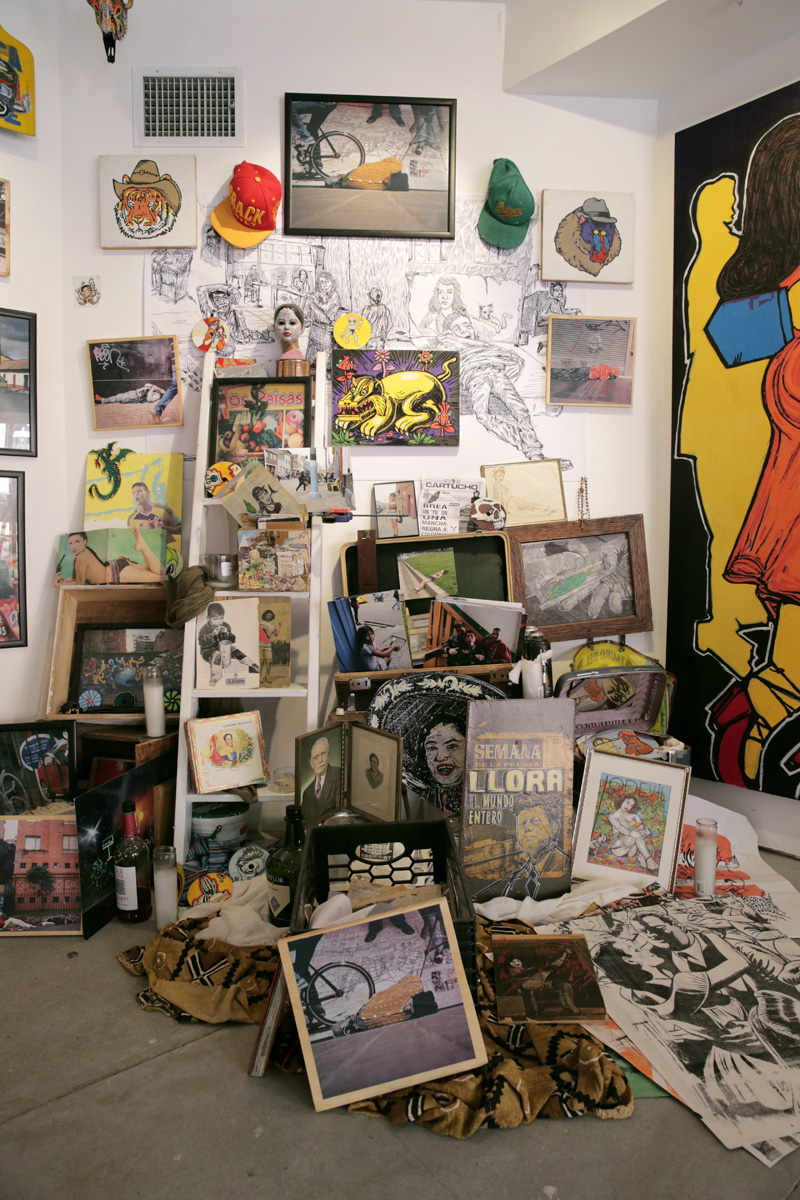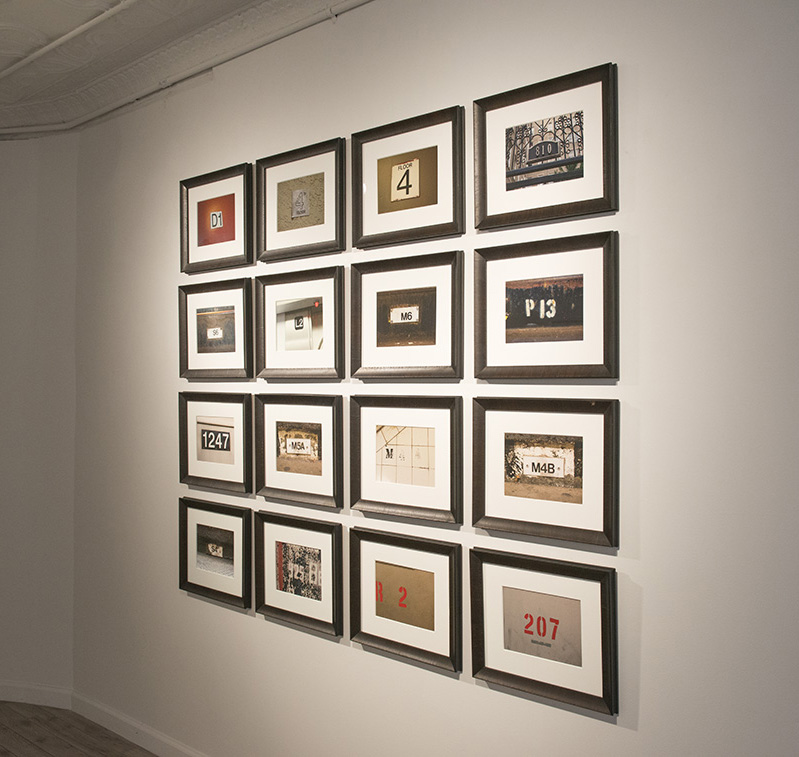Lower East Sides: Elsewheres Around the Corner

Lorenzo Masnah and Alex Seel, Entre La Guardia y El Dorado, 2015. Installation at XY Atelier Gallery.
Every summer, many expect the art world to hibernate, in cool temperature-controlled repose, remerging with a roar of high sales in the fall season. And every year, I stumble upon some fantastic independent shows in New York’s humid season, usually just strolling by, or in this case, at the recommendation of a friend. Not just any friend, but someone who has lived in the Lower East Side since the mid 1990s and has watched its culture change dramatically, from a multi-ethnic enclave where English was a minority language, to another frightening model of how rampant gentrification and predatory capitalism combine to erase and displace. Many New York avenues and Squares have been transformed to function like any other domestic mall. The global problem of economic displacement creates unlivable conditions that are increasingly looking like one another, especially among places with existing patterns of immigration.
That was how the Columbian-born Masnah began to describe this work: the street language of marginality is disappearing in ways that reflect the sameness of rampant corporatization. Entre La Guardia y El Dorado, is a collaborative installation by Lorenzo Masnah and Alex Seel, in which photography plays a key role in demonstrating these cycles of sameness across borders. In fact, the idea of a border is rendered null because our social poverties are increasingly looking like, or referencing, one another. The use of photography in Masnah and Seal’s installation is key: the repetition of images present a cycle. Seel’s photographs are shown as pictures, then shown again after Masnah has drawn on them and made outlines to emphasize certain qualities. Allan Sekula has warned us of the problematic power dynamics and the constant othering present in the “find a bum school of photography” approach to representation. Without betraying that warning, Masnah and Seel have assembled a collection of what is at stake: the objects and lives that become discarded, and the displacement that is activated when public policy ignores the harm of gentrification. Photographs are shown in a cycle of constant modification, mirroring the subject matter of the installation, which is that in this global climate, the marginality present in Loisaida can feel interchangeable with similar living conditions in Bogotá. And elsewhere.

Kari Soinio’s A Way By Numbers, 2014. Installation at Station Independent Projects.
Not too far from XY Atelier where Masnah and Seal are exhibiting, is another work referencing the disappearing street language of urban life. Kari Soinio’s A Way By Numbers on view at Station Independent Projects, is a conceptual mapping of building markings from the Bronx through Crown Heights, including all five boroughs of New York City. Much like an accidental continuation of Zoe Leonard’s Analogue series, Soinio looks the numeric language that sets one building apart from another, buildings we can expect to be demolished in the near future. Capturing urban space with an eye on its “highly contested air space” and making a visual record of the soon-to-be lost language of building identification, Soinio makes the human passage clear. Bodies are still moving through these spaces and inhabiting spaces that instead of remaining neighborhoods, become sites of unaffordable transition.
Entre La Guardia y El Dorado: Lorenzo Masnah and Alex Seel
XY Atelier Gallery
81 Hester Street at Orchard
NY, NY
Closing August 30th, 2015
(Un)livable: Janet Biggs, Kari Soinio
Station Independent Projects
138 Eldridge Street, 2F
Closing Sept. 6, 2015
